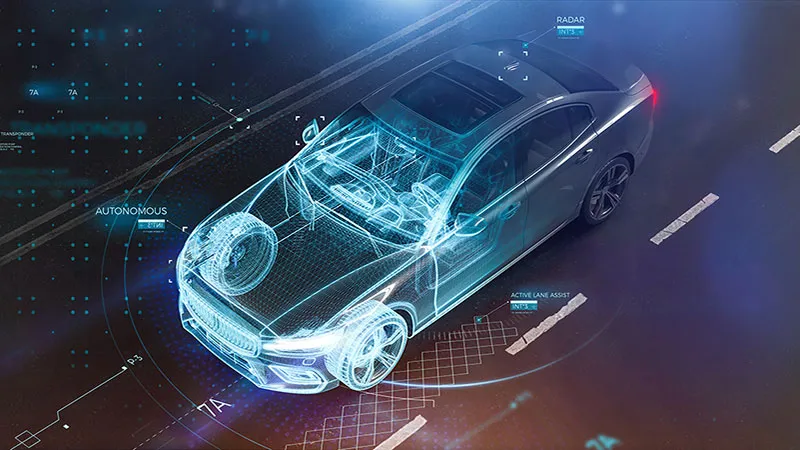Automotive
Automotive electronics is a specialized branch of the electronics industry that focuses on the development, manufacturing, and integration of electronic systems and components into vehicles. These systems and components play a crucial role in modern automobiles, providing a wide range of functionalities related to safety, comfort, convenience, entertainment, and performance. The automotive electronics industry serves various applications within the automotive sector, catering to both consumer and commercial vehicles, as well as emerging transportation technologies.
Automotive electronics encompasses a diverse array of electronic systems, modules, and components installed in vehicles to enhance their functionality, safety, efficiency, and comfort. These electronic systems are integrated into virtually every aspect of modern automobiles, from the engine management system and safety features to infotainment and telematics solutions. Automotive electronics have evolved significantly over the years, driven by advancements in semiconductor technology, embedded systems, and software development.
Applications:
1. Powertrain Control: Automotive electronics control the engine, transmission, and other powertrain components to optimize fuel efficiency, emissions, and performance.
2. Safety and Driver Assistance: Electronic systems such as anti-lock braking systems (ABS), electronic stability control (ESC), adaptive cruise control, lane departure warning, and collision avoidance systems enhance vehicle safety.
3. Infotainment and Connectivity: In-vehicle entertainment systems, navigation, Bluetooth connectivity, smartphone integration, and voice recognition systems provide drivers and passengers with entertainment and convenience features.
4. Comfort and Convenience: Automotive electronics include climate control systems, power windows, seats, mirrors, and keyless entry systems, enhancing driver and passenger comfort and convenience.
5. Advanced Driver Assistance Systems (ADAS): ADAS features include autonomous emergency braking, lane-keeping assistance, adaptive headlights, and parking assistance systems, improving vehicle safety and reducing accidents.
6. Telematics and Vehicle Diagnostics: Telematics systems enable vehicle tracking, remote diagnostics, vehicle health monitoring, and over-the-air software updates.
7. Electric and Hybrid Vehicles: Automotive electronics play a critical role in electric and hybrid vehicles, managing battery systems, electric motors, regenerative braking, and charging infrastructure.
8. Autonomous Vehicles (AVs): AVs rely heavily on automotive electronics, including sensors, cameras, radar, lidar, GPS, and sophisticated computer systems, to perceive the environment and make real-time driving decisions.
Industries Served:
The automotive electronics industry serves various sectors and stakeholders, including:
• Automobile Manufacturers: Major automakers and original equipment manufacturers (OEMs) integrate electronic systems and components into their vehicles to enhance performance, safety, and user experience.
• Electronics Suppliers: Electronics suppliers develop and supply a wide range of components and systems, including sensors, microcontrollers, processors, displays, and connectivity modules, to automotive OEMs.
• Semiconductor Companies: Semiconductor manufacturers produce specialized chips, microcontrollers, sensors, and integrated circuits designed for automotive applications.
• Software Developers: Software companies develop embedded software, algorithms, and operating systems tailored for automotive platforms, including vehicle control systems, infotainment, and telematics.
• Research and Development: Research institutions and R&D labs conduct studies and experiments to develop next-generation automotive technologies, including electric and autonomous vehicles.
Target Areas:
The target areas for automotive electronics include:
• Vehicle Performance: Enhancing engine performance, fuel efficiency, and emissions control through electronic engine management systems.
• Safety: Implementing advanced safety features and driver assistance systems to reduce accidents and improve occupant safety.
• Connectivity: Providing seamless connectivity and integration with smartphones, tablets, and other digital devices, enabling access to entertainment, navigation, and communication services.
• Comfort: Enhancing driver and passenger comfort with features such as climate control, seat heating, and adjustable seating positions.
• Convenience: Offering convenience features such as keyless entry, remote start, power tailgate operation, and hands-free access.
• Infotainment: Providing entertainment, navigation, and information services through in-vehicle multimedia systems and touchscreen interfaces.
• Telematics: Enabling vehicle tracking, diagnostics, remote monitoring, and over-the-air updates for maintenance and software upgrades.
Future Trends and Innovations:
The automotive electronics industry is poised for continued growth and innovation, driven by emerging technologies and evolving consumer preferences. Some of the key trends and innovations shaping the future of automotive electronics include:
1. Electric and Autonomous Vehicles: The shift toward electric vehicles (EVs) and autonomous driving technologies is driving demand for advanced electronic systems and components, including battery management systems, electric powertrains, and sensor fusion platforms.
2. Connected Cars: Increasing connectivity and data exchange capabilities in vehicles enable advanced telematics, vehicle-to-vehicle (V2V) communication, and vehicle-to-infrastructure (V2X) connectivity, paving the way for safer and more efficient transportation systems.
3. Artificial Intelligence (AI) and Machine Learning: AI-powered algorithms and machine learning models enable advanced driver assistance features, predictive maintenance, and personalized user experiences in vehicles.
4. Cybersecurity: With the growing connectivity of vehicles, cybersecurity becomes a critical concern, leading to the development of robust security protocols and encryption mechanisms to protect against cyber threats and data breaches.
5. Environmental Sustainability: Automotive electronics contribute to the development of eco-friendly vehicles and sustainable transportation solutions, including energy-efficient powertrains, regenerative braking systems, and lightweight materials.
Automotive electronics play a pivotal role in shaping the future of transportation, offering advanced features, safety enhancements, and connectivity options that redefine the driving experience. As the automotive industry continues to evolve, electronics will remain at the forefront of innovation, driving efficiency, safety, and sustainability in vehicles. The convergence of automotive and technology sectors is creating new opportunities for collaboration, research, and development, leading to breakthroughs in electric mobility, autonomous driving, and connected car technologies. With ongoing investments in research, development, and manufacturing, the automotive electronics industry is poised to revolutionize the way we drive and interact with vehicles in the years to come.

